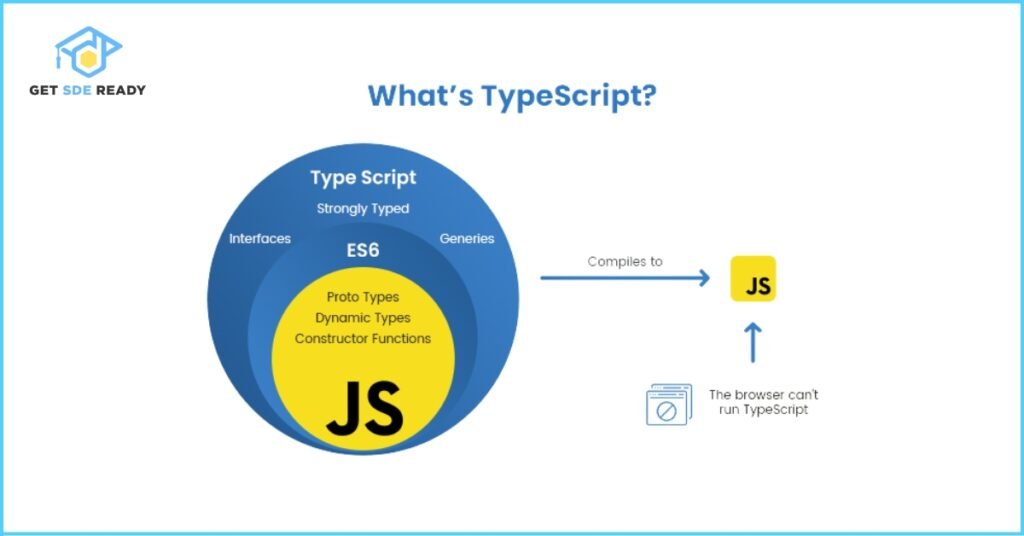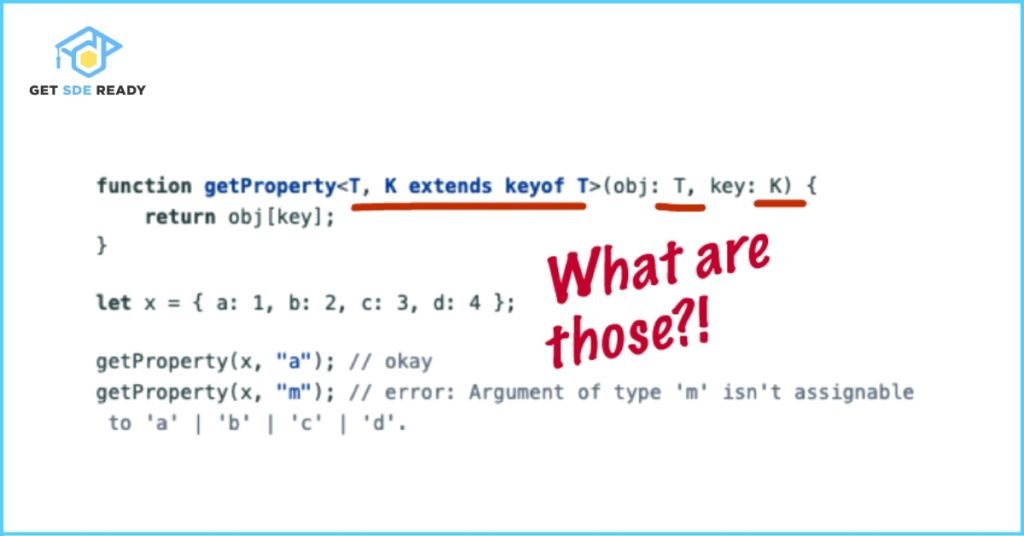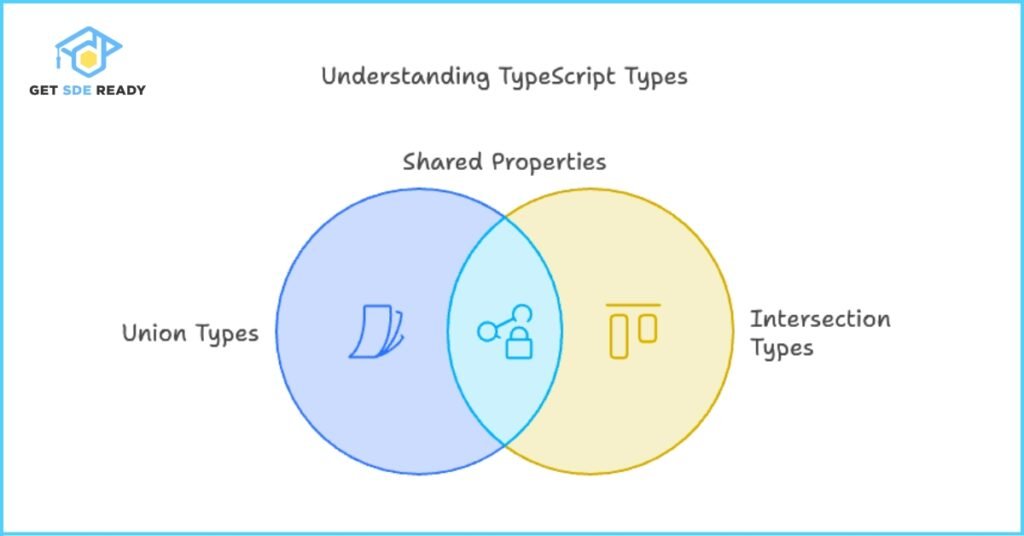Data Structures and Algorithms
- Introduction to Data Structures and Algorithms
- Time and Space Complexity Analysis
- Big-O, Big-Theta, and Big-Omega Notations
- Recursion and Backtracking
- Divide and Conquer Algorithm
- Dynamic Programming: Memoization vs. Tabulation
- Greedy Algorithms and Their Use Cases
- Understanding Arrays: Types and Operations
- Linear Search vs. Binary Search
- Sorting Algorithms: Bubble, Insertion, Selection, and Merge Sort
- QuickSort: Explanation and Implementation
- Heap Sort and Its Applications
- Counting Sort, Radix Sort, and Bucket Sort
- Hashing Techniques: Hash Tables and Collisions
- Open Addressing vs. Separate Chaining in Hashing
- DSA Questions for Beginners
- Advanced DSA Questions for Competitive Programming
- Top 10 DSA Questions to Crack Your Next Coding Test
- Top 50 DSA Questions Every Programmer Should Practice
- Top Atlassian DSA Interview Questions
- Top Amazon DSA Interview Questions
- Top Microsoft DSA Interview Questions
- Top Meta (Facebook) DSA Interview Questions
- Netflix DSA Interview Questions and Preparation Guide
- Top 20 DSA Interview Questions You Need to Know
- Top Uber DSA Interview Questions and Solutions
- Google DSA Interview Questions and How to Prepare
- Airbnb DSA Interview Questions and How to Solve Them
- Mobile App DSA Interview Questions and Solutions
DSA Interview Questions
- DSA Questions for Beginners
- Advanced DSA Questions for Competitive Programming
- Top 10 DSA Questions to Crack Your Next Coding Test
- Top 50 DSA Questions Every Programmer Should Practice
- Top Atlassian DSA Interview Questions
- Top Amazon DSA Interview Questions
- Top Microsoft DSA Interview Questions
- Top Meta (Facebook) DSA Interview Questions
- Netflix DSA Interview Questions and Preparation Guide
- Top 20 DSA Interview Questions You Need to Know
- Top Uber DSA Interview Questions and Solutions
- Google DSA Interview Questions and How to Prepare
- Airbnb DSA Interview Questions and How to Solve Them
- Mobile App DSA Interview Questions and Solutions
Data Structures and Algorithms
- Introduction to Data Structures and Algorithms
- Time and Space Complexity Analysis
- Big-O, Big-Theta, and Big-Omega Notations
- Recursion and Backtracking
- Divide and Conquer Algorithm
- Dynamic Programming: Memoization vs. Tabulation
- Greedy Algorithms and Their Use Cases
- Understanding Arrays: Types and Operations
- Linear Search vs. Binary Search
- Sorting Algorithms: Bubble, Insertion, Selection, and Merge Sort
- QuickSort: Explanation and Implementation
- Heap Sort and Its Applications
- Counting Sort, Radix Sort, and Bucket Sort
- Hashing Techniques: Hash Tables and Collisions
- Open Addressing vs. Separate Chaining in Hashing
- DSA Questions for Beginners
- Advanced DSA Questions for Competitive Programming
- Top 10 DSA Questions to Crack Your Next Coding Test
- Top 50 DSA Questions Every Programmer Should Practice
- Top Atlassian DSA Interview Questions
- Top Amazon DSA Interview Questions
- Top Microsoft DSA Interview Questions
- Top Meta (Facebook) DSA Interview Questions
- Netflix DSA Interview Questions and Preparation Guide
- Top 20 DSA Interview Questions You Need to Know
- Top Uber DSA Interview Questions and Solutions
- Google DSA Interview Questions and How to Prepare
- Airbnb DSA Interview Questions and How to Solve Them
- Mobile App DSA Interview Questions and Solutions
DSA Interview Questions
- DSA Questions for Beginners
- Advanced DSA Questions for Competitive Programming
- Top 10 DSA Questions to Crack Your Next Coding Test
- Top 50 DSA Questions Every Programmer Should Practice
- Top Atlassian DSA Interview Questions
- Top Amazon DSA Interview Questions
- Top Microsoft DSA Interview Questions
- Top Meta (Facebook) DSA Interview Questions
- Netflix DSA Interview Questions and Preparation Guide
- Top 20 DSA Interview Questions You Need to Know
- Top Uber DSA Interview Questions and Solutions
- Google DSA Interview Questions and How to Prepare
- Airbnb DSA Interview Questions and How to Solve Them
- Mobile App DSA Interview Questions and Solutions
TypeScript Interview Questions for Modern Frontend Developers: A Comprehensive Guide
In the fast-paced world of frontend development, mastering TypeScript is no longer optional—it’s essential. As a statically typed superset of JavaScript, TypeScript adds significant value by improving code quality, ensuring type safety, and boosting maintainability. Whether you’re preparing for your next TypeScript interview or refining your skills, this detailed guide will walk you through essential TypeScript interview questions, explain complex concepts, and provide actionable insights to enhance your expertise.
Looking to elevate your TypeScript skills further? Check out our free courses and get the latest updates on new offerings that will boost your career in frontend development.
1. What is TypeScript, and How is It Different from JavaScript?
1.1. Understanding TypeScript
TypeScript is a statically typed, compiled superset of JavaScript developed by Microsoft. Unlike JavaScript, which is dynamically typed, TypeScript enforces type safety, enabling developers to catch errors at compile time instead of at runtime. This leads to fewer bugs, more maintainable code, and improved developer productivity.
In addition to static typing, TypeScript incorporates advanced features such as interfaces, enums, generics, and decorators, which provide greater flexibility and power when building complex applications.

1.2. Key Differences Between TypeScript and JavaScript
- Static vs. Dynamic Typing: TypeScript’s type system allows explicit type definitions for variables, function parameters, and return values. This prevents common runtime errors found in dynamically typed languages like JavaScript.
- Compilation Requirement: TypeScript must be transpiled into JavaScript before it can be executed. JavaScript runs directly in the browser or Node.js without the need for a compilation step.
- Tooling Support: TypeScript’s built-in tooling offers better autocompletion, inline documentation, and error detection compared to JavaScript. This enhances developer experience and productivity, especially in larger codebases.
- Advanced Features: TypeScript introduces additional language features like interfaces, enums, and generics, which are not present in vanilla JavaScript. These features improve code readability, scalability, and maintainability.
For a deeper dive into web development with TypeScript, consider exploring our Web Development Course.
1.3. Why Choose TypeScript?
- Error Prevention: Type annotations help identify errors at compile time, preventing issues from reaching production.
- Refactoring Ease: The presence of types makes it easier to refactor code while maintaining confidence that no bugs will be introduced.
- Developer Productivity: TypeScript integrates seamlessly with modern IDEs (Integrated Development Environments), offering code suggestions, auto-completions, and quick fixes, which boosts productivity.
2. What Are Type Annotations in TypeScript?
2.1. Basics of Type Annotations
Type annotations are a key feature of TypeScript, allowing developers to explicitly define the types of variables, function parameters, and return values. This ensures that variables are used correctly and makes the code more predictable.
Example:
let message: string = "Hello, TypeScript!";
let age: number = 30;
In this example, the message variable can only hold a string, and the age variable can only hold a number. If you attempt to assign an incorrect value, TypeScript will raise a compile-time error
2.2. Common Type Annotations
- Primitive Types: string, number, boolean
- Arrays: number[] or Array<number>
- Tuples: [string, number] for fixed-length arrays with different types
- Objects: { name: string; age: number } to define structured data types
Need more advanced data structures and type annotations? Check out our Master DSA & Web Dev Course.
3. What Are Interfaces in TypeScript?
3.1. Introduction to Interfaces
In TypeScript, interfaces are used to define the structure of an object, ensuring that objects adhere to a specific shape. Interfaces enforce consistency across your code, making it easier to manage complex applications. They help define object properties and method signatures, ensuring that the objects passed around in your functions are valid.
3.2. Basic Example
interface Person {
name: string;
age: number;
}
function greet(person: Person): string {
return `Hello, ${person.name}!`;
}
const person = { name: "John", age: 25 };
console.log(greet(person)); // Hello, John!
3.3. Optional Properties
You can make properties optional by using the ? syntax. This allows you to define properties that may or may not be present in an object.
interface Person {
name: string;
age: number;
address?: string; // Optional property
}
3.4. Readonly Properties
If you want to ensure that a property cannot be modified after its initialization, you can use the readonly keyword:
interface Person {
readonly id: number;
name: string;
}
4. What Are Generics in TypeScript?
4.1. Introduction to Generics
Generics in TypeScript enable you to create reusable components that work with any data type while maintaining type safety. With generics, you can define placeholder types in functions, classes, and interfaces, which will be replaced with actual types when the component is used.

4.2. Basic Generic Example
function identity<T>(value: T): T {
return value;
}
console.log(identity("Hello")); // Inferred type: string
console.log(identity(42)); // Inferred type: number
4.3. Benefits of Generics
- Code Reusability: You can use generics to create functions and classes that work with any data type, reducing duplication in your codebase.
- Type Safety: Generics ensure that only the correct types are used, preventing runtime errors and type mismatches.
5. What Are Union and Intersection Types in TypeScript?
5.1. Union Types
Union types allow a variable to hold multiple types of values. You can define a union type using the pipe (|) operator.
Example:
let value: string | number;
value = "Hello"; // Valid
value = 42; // Valid

5.2. Intersection Types
Intersection types allow you to combine multiple types into one. You can define an intersection type using the ampersand (&) operator.
Example:
interface Person {
name: string;
}
interface Worker {
job: string;
}
type Employee = Person & Worker;
const employee: Employee = {
name: "John",
job: "Developer"
};
6. How Does TypeScript Improve JavaScript’s OOP Features?
6.1. Classes and Inheritance
TypeScript adds Object-Oriented Programming (OOP) features like classes, inheritance, and access modifiers to JavaScript, making it easier to build scalable and maintainable applications.
Example:
class Animal {
constructor(public name: string) {}
speak(): void {
console.log(`${this.name} makes a noise.`);
}
}
class Dog extends Animal {
speak(): void {
console.log(`${this.name} barks.`);
}
}
const dog = new Dog("Buddy");
dog.speak(); // Buddy barks.
6.2. Access Modifiers
TypeScript introduces three access modifiers—public, private, and protected—to control the visibility of properties and methods in classes:
- Public: Accessible from anywhere.
- Private: Accessible only within the class.
- Protected: Accessible within the class and its subclasses.
class Car {
private engineStatus: string = "off";
public startEngine() {
this.engineStatus = "on";
}
}
7. What is the TypeScript Compiler and How Does It Work?
7.1. The TypeScript Compiler (tsc)
The TypeScript compiler (tsc) is a tool that converts TypeScript code into JavaScript. It checks for type errors during compilation and ensures that the final output is compatible with JavaScript environments.
7.2. How to Use the TypeScript Compiler
To start using TypeScript, follow these steps:
- Install TypeScript globally via npm:
npm install -g typescript - Compile TypeScript files into JavaScript:
tsc app.ts
You can configure the TypeScript compilation settings using a tsconfig.json file.
8. What Are Decorators in TypeScript?
8.1. Introduction to Decorators
Decorators in TypeScript are a special kind of function used to modify classes, methods, properties, or parameters at runtime. They are commonly used in Angular for dependency injection and metadata reflection.
8.2. Example of a Class Decorator
function logClass(target: Function) {
console.log(`Class created: ${target.name}`);
}
@logClass
class MyClass {}
const obj = new MyClass(); // Logs: Class created: MyClass
8.3. Use Cases for Decorators
Decorators are widely used for:
- Metadata Collection: To collect metadata about classes and methods.
- Method Wrapping: To modify methods or properties by wrapping them with additional logic.
9. How Do You Handle Asynchronous Operations in TypeScript?
9.1. Using Async and Await
TypeScript supports async and await syntax, which makes it easier to write asynchronous code. With async/await, you can handle asynchronous operations in a more readable and maintainable way.
Example:
async function fetchData(): Promise<string> {
const response = await fetch("https://api.example.com");
const data = await response.json();
return data.message;
}
9.2. Promises and Types
TypeScript ensures type safety when working with Promises and asynchronous operations.
function fetchData(): Promise<{ message: string }> {
return fetch("https://api.example.com")
.then(response => response.json())
.then(data => data.message);
}
Q.10. What is TypeScript’s Type Inference and How Does It Work?
10.1. Understanding Type Inference
Type Inference in TypeScript refers to the ability of the compiler to automatically infer the types of variables, function parameters, and return values based on the assigned values or the context in which they are used. TypeScript’s powerful type inference system ensures that developers don’t need to manually specify types for every variable or function, making code cleaner and more efficient while still providing the safety of static typing.
10.2. How Type Inference Works
When you declare a variable or a constant and assign it a value, TypeScript automatically determines the type based on the value’s data type. For example:
let message = "Hello, TypeScript!"; // Inferred type: string
let count = 5; // Inferred type: number
In this example:
- TypeScript infers that message is a string because the value “Hello, TypeScript!” is a string.
- TypeScript infers that count is a number because the value 5 is a number.
10.3. Benefits of Type Inference
- Conciseness: Reduces the need for explicit type annotations, making code more concise and easier to read.
- Type Safety: Even though types are inferred, TypeScript ensures type safety by catching errors at compile-time if the inferred type is misused.
- Maintainability: Helps in reducing boilerplate code and maintaining the type system consistently without losing type safety.
However, it is recommended to explicitly type complex objects or parameters for better clarity and to avoid issues with misinference in larger codebases.
For more advanced TypeScript topics like generics and type inference in function returns, you can explore our Master DSA & Web Dev System Design Course.
Q.11. What Are Mapped Types in TypeScript and How Are They Used?
11.1. Introduction to Mapped Types
Mapped Types in TypeScript allow you to create new types by transforming properties of an existing type. This can be particularly useful when you want to modify or extend existing types without changing the original type definitions. Mapped types work by iterating over the properties of a given type and creating a new type by applying transformations.
11.2. Basic Syntax of Mapped Types
A simple mapped type can be created using the following syntax:
type ReadOnly<T> = {
readonly [K in keyof T]: T[K];
};
This mapped type ReadOnly takes a type T and makes all its properties readonly. Here’s an example of how this would work:
interface Person {
name: string;
age: number;
}
type ReadOnlyPerson = ReadOnly<Person>;
const person: ReadOnlyPerson = { name: "John", age: 30 };
person.name = "Jane"; // Error: Cannot assign to 'name' because it is a read-only property
11.3. Benefits of Mapped Types
- Flexibility: Mapped types allow for dynamic creation of types by transforming an existing type.
- Code Reusability: They are useful for creating reusable utilities for transforming types, such as making properties optional, required, or readonly.
- Consistency: Mapped types ensure that transformations apply uniformly across the properties of the type.
11.4. Use Cases of Mapped Types
- Making all properties of a type optional or required.
- Converting an entire object to a readonly type.
- Creating new types that adapt to changes in another type.
For a deeper dive into advanced TypeScript features like mapped types and generics, explore our Data Science Courses.
Q.12. How Does TypeScript Handle Null and Undefined?
12.1. The Basics of null and undefined
In JavaScript, null and undefined are two special values that represent the absence of a value. TypeScript, being a superset of JavaScript, introduces stricter handling of these values by providing strictNullChecks to ensure that null and undefined are explicitly handled.
- null: Represents the intentional absence of any object value. A variable explicitly assigned null is considered a valid value.
- undefined: Represents the uninitialized state of a variable. A variable that is declared but not assigned any value is of type undefined.
12.2. How TypeScript Handles null and undefined
TypeScript introduces strict null checks that can be enabled in the tsconfig.json file. When strictNullChecks is enabled, null and undefined are considered separate types and cannot be assigned to other types unless explicitly allowed.
For example:
let name: string = "John";
name = null; // Error: Type 'null' is not assignable to type 'string' when strictNullChecks is enabled.
12.3. Working with null and undefined
To assign null or undefined to a variable, you need to explicitly define that the variable can accept these values using union types:
let name: string | null = null; // Valid
let age: number | undefined = undefined; // Valid
12.4. Enabling Strict Null Checks
To enable strict null checks, modify the tsconfig.json file as follows:
{
"compilerOptions": {
"strictNullChecks": true
}
}
12.5. Benefits of Strict Null Checks
- Enhanced Type Safety: Ensures that null and undefined are handled explicitly, reducing the likelihood of errors.
- Preventing Bugs: Helps avoid runtime errors due to unintentional assignments of null or undefined to non-nullable types.
By enforcing explicit handling of null and undefined, TypeScript ensures that your code is safer and more predictable.
Q.13. How Do You Implement Type Aliases and Union Types in TypeScript?
13.1. Understanding Type Aliases
In TypeScript, type aliases provide a way to create a new name for a type. This can be useful for simplifying complex types or creating reusable type definitions.
Example of a basic type alias:
type Point = { x: number; y: number };
const point: Point = { x: 10, y: 20 };
13.2. Implementing Union Types
Union types allow you to define a type that can accept multiple types of values. This is particularly useful when a value can be one of several types.
Example of a union type:
let value: string | number;
value = "Hello"; // Valid
value = 42; // Valid
13.3. Combining Type Aliases and Union Types
You can combine type aliases and union types to create more flexible and readable type definitions. For example, you can define a type that allows multiple structures or types:
type NameOrAge = string | number;
function greet(value: NameOrAge) {
if (typeof value === "string") {
return `Hello, ${value}!`;
}
return `Your age is ${value}`;
}
13.4. Benefits of Type Aliases and Union Types
- Improved Readability: Type aliases can make complex types more readable, while union types provide flexibility.
- Maintainability: By using type aliases, you can ensure that complex types are defined only once, making the code easier to update.
- Type Safety: Union types ensure that a value is one of the allowed types, preventing runtime errors due to incorrect assignments.
Q.14. How Do TypeScript’s Advanced Types Like Indexed Access and Conditional Types Work?
14.1. Indexed Access Types
Indexed Access Types in TypeScript allow you to extract the type of a specific property from an object type. This can be incredibly useful when you need to dynamically reference and manipulate types based on their structure.
Example:
interface Person {
name: string;
age: number;
}
type NameType = Person["name"]; // Inferred type: string
14.2. Conditional Types
Conditional Types in TypeScript enable you to create types based on conditions. They follow the syntax T extends U ? X : Y, where if T extends U, the type will be X, otherwise, it will be Y.
Example:
type IsString<T> = T extends string ? "Yes" : "No";
type Test1 = IsString<string>; // "Yes"
type Test2 = IsString<number>; // "No"
14.3. Practical Use Cases
- Indexed Access Types: You can use indexed access types to dynamically retrieve the type of properties in objects, enabling you to build more flexible utilities.
- Conditional Types: Conditional types allow you to build powerful type transformations based on type relationships, enabling more complex and reusable logic.
14.4. Benefits of Advanced Types
- Code Flexibility: Advanced types like conditional types and indexed access allow for more dynamic and flexible code, enabling you to adapt to varying use cases.
- Type Safety: These features allow you to build complex type logic while maintaining the safety guarantees TypeScript provides.
Conclusion
Mastering TypeScript is essential for any frontend developer looking to improve their career prospects and tackle modern web development challenges. Understanding core features like type annotations, interfaces, generics, and decorators—along with advanced topics such as asynchronous programming and OOP principles—will give you a solid foundation for excelling in TypeScript interviews and beyond.
For additional learning, explore our Data Science Courses and Crash Course offerings to further expand your skill set.
FAQs
Why is TypeScript preferred over JavaScript in large-scale projects?
TypeScript offers better tooling, type safety, and refactoring capabilities, making it ideal for large applications that require maintainability and error prevention.
Can TypeScript be used with React?
Yes, TypeScript integrates seamlessly with React, improving type safety and enhancing development with features like typed props.
What are decorators in TypeScript used for?
Decorators modify classes, methods, or properties at runtime, allowing for advanced features like dependency injection and metadata reflection.
How do generics enhance TypeScript's flexibility?
Generics allow you to create reusable, type-safe components that can work with multiple types, enhancing flexibility without sacrificing type safety.
How does TypeScript's static typing help during development?
Static typing helps catch errors at compile time, preventing bugs from reaching production and improving overall code quality.

DSA, High & Low Level System Designs
- 85+ Live Classes & Recordings
- 24*7 Live Doubt Support
- 400+ DSA Practice Questions
- Comprehensive Notes
- HackerRank Tests & Quizzes
- Topic-wise Quizzes
- Case Studies
- Access to Global Peer Community
Buy for 52% OFF
₹25,000.00 ₹11,999.00
Accelerate your Path to a Product based Career
Boost your career or get hired at top product-based companies by joining our expertly crafted courses. Gain practical skills and real-world knowledge to help you succeed.

SDE 360: Master DSA, System Design, AI & Behavioural
- 100+ Live Classes & Recordings
- 24*7 Live Doubt Support
- 400+ DSA Practice Questions
- Comprehensive Notes
- HackerRank Tests & Quizzes
- Topic-wise Quizzes
- Case Studies
- Access to Global Peer Community
Buy for 50% OFF
₹39,999.00 ₹19,999.00

DSA, High & Low Level System Designs
- 85+ Live Classes & Recordings
- 24*7 Live Doubt Support
- 400+ DSA Practice Questions
- Comprehensive Notes
- HackerRank Tests & Quizzes
- Topic-wise Quizzes
- Case Studies
- Access to Global Peer Community
Buy for 52% OFF
₹25,000.00 ₹11,999.00

Fast-Track to Full Spectrum Software Engineering
- 120+ Live Classes & Recordings
- 24*7 Live Doubt Support
- 400+ DSA Practice Questions
- Comprehensive Notes
- HackerRank Tests & Quizzes
- 12+ live Projects & Deployments
- Case Studies
- Access to Global Peer Community
Buy for 51% OFF
₹35,000.00 ₹16,999.00

Low & High Level System Design
- 20+ Live Classes & Recordings
- 24*7 Live Doubt Support
- Case Studies
- Comprehensive Notes
- HackerRank Tests
- Topic-wise Quizzes
- Access to Global Peer Community
- Interview Prep Material
Buy for 60% OFF
₹20,000.00 ₹7,999.00

Mastering Mern Stack (WEB DEVELOPMENT)
- 65+ Live Classes & Recordings
- 24*7 Live Doubt Support
- 12+ Hands-on Live Projects & Deployments
- Comprehensive Notes & Quizzes
- Real-world Tools & Technologies
- Access to Global Peer Community
- Interview Prep Material
- Placement Assistance
Buy for 53% OFF
₹15,000.00 ₹6,999.00
Reach Out Now
If you have any queries, please fill out this form. We will surely reach out to you.
Contact Email
Reach us at the following email address.
arun@getsdeready.com
Phone Number
You can reach us by phone as well.
+91-97737 28034
Our Location
Rohini, Sector-3, Delhi-110085
